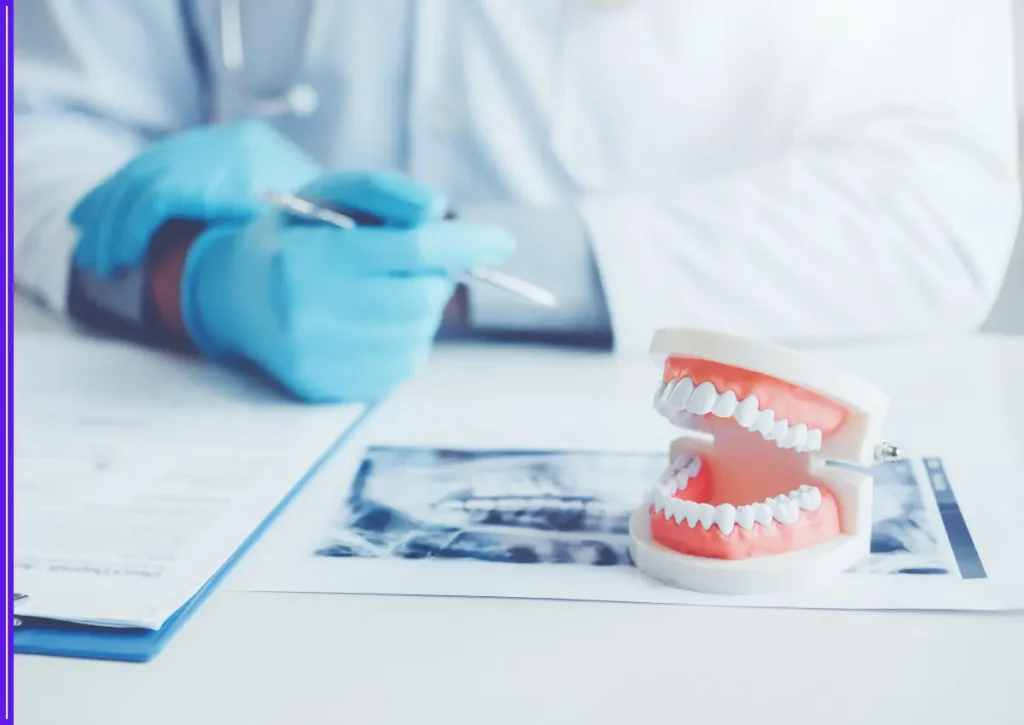In a medical breakthrough that could transform how we treat tooth loss, scientists have for the first time successfully grown human teeth in a laboratory setting. This development marks a bold step forward in regenerative medicine, with the potential to offer natural solutions to millions who rely on dentures, implants, or dental bridges.
From Petri Dish to Real Teeth: The Science Behind It
The research, led by dental scientists at Tufts University and supported by collaborations in Japan, explored the complex interaction of human dental stem cells with animal tissue. In one stunning example, scientists implanted a mix of human and pig dental tissues into the jaws of miniature pigs. Over time, these tissues formed structures that closely resemble natural human teeth—complete with enamel, dentin, and even the beginnings of roots.

Meanwhile, researchers in Japan successfully grew fully-formed teeth in lab dishes using single cells. When these lab-grown teeth were implanted into mice, they developed normally—forming enamel, pulp, ligaments, and all the other components of a natural tooth.
This not only proves that it’s possible to regrow teeth from scratch, but that these teeth could, one day, function like the real thing.
The Possibility of a Third Set of Teeth
In another astonishing development, Japanese scientists are testing a drug that may stimulate the growth of a third set of teeth in humans. While we’re typically limited to two sets—baby and adult teeth—this drug targets a gene (USAG-1) that restricts tooth growth. Early trials on animals have shown promising results, and human trials are expected to begin soon, with hopes that this medication could be available within the next few years.
Imagine: instead of replacing missing teeth with metal or ceramic implants, your own body could simply grow new ones.
Why This Matters—Especially for Women
Tooth loss is not just a cosmetic concern—it affects nutrition, self-confidence, and long-term health. For women, these challenges can be magnified by hormonal shifts during pregnancy, menopause, or aging, which often impact gum health and bone density.
This breakthrough offers a more organic, long-lasting alternative to conventional dental solutions. It could eventually lead to a future where regenerative treatments are personalized, affordable, and easily accessible—even in underserved communities.
A Future Rooted in Regrowth
While there’s still work to be done before lab-grown teeth become a clinical reality, the progress made so far is nothing short of revolutionary. With ongoing research and human trials on the horizon, we may be entering an era where the body heals itself—not just cuts and bruises, but full teeth.
At Womanias, we believe every woman deserves access to scientific innovation that enhances her quality of life. This breakthrough isn’t just about dentistry—it’s about dignity, empowerment, and reclaiming control over our health in the most natural way possible.
Why This Discovery Matters
Tooth loss is not just a cosmetic issue. Missing teeth can cause difficulties in chewing, speech, and even digestion. They also lead to bone loss in the jaw, which changes facial structure and accelerates aging. Traditional solutions such as dentures and implants, while effective, come with limitations. Dentures may feel uncomfortable, and implants require healthy jawbone structure and are prone to infection or rejection in some cases.
The ability to grow a patient’s own teeth using their stem cells could eliminate many of these challenges. A regenerated tooth would naturally integrate with the jawbone, provide long-lasting strength, and be biologically identical to other teeth. For millions of people suffering from tooth loss, this could revolutionize oral healthcare.
The Journey of Research
The concept of tooth regeneration is not entirely new. In the early 2000s, scientists experimented with mouse and rat models, demonstrating that teeth could be regenerated under specific laboratory conditions. The challenge was translating this success into human biology, which is far more complex.
Recent studies have identified key growth factors and signaling pathways, such as BMP (Bone Morphogenetic Protein) and Wnt signaling, that guide stem cells into developing into tooth structures. By carefully replicating these biological signals, scientists have been able to direct human stem cells to grow into functioning tooth-like organs.
One research group in Japan has been particularly successful, even initiating clinical trials of drugs that can stimulate the growth of new teeth in children born with congenital tooth agenesis (a condition where some permanent teeth never develop). Their results suggest that in the future, a simple injection might be able to trigger natural tooth growth in humans.
Potential Benefits of Lab-Grown Teeth
If the technology reaches clinical practice, the benefits could be extraordinary:
- Permanent Solution: Unlike dentures or implants, bioengineered teeth would grow naturally and last a lifetime.
- Natural Functionality: Regenerated teeth would have nerves, blood vessels, and enamel, making them functionally superior to artificial replacements.
- Reduced Risk of Complications: Since the teeth would be generated from the patient’s own cells, the risk of rejection, infection, or implant failure would be minimal.
- Bone Preservation: Natural teeth help preserve jawbone structure, which could prevent the bone loss commonly seen with implants and dentures.
- Accessibility: With advancements in regenerative medicine, this treatment could eventually become more cost-effective and widely available.
Challenges Still Ahead
While the progress is exciting, several challenges must be addressed before lab-grown teeth become a reality in dental clinics:
- Timeframe: Natural teeth take years to grow. Scientists must find ways to accelerate this process for practical use.
- Scalability: Growing a single tooth in a lab is one achievement; being able to consistently produce teeth for thousands of patients is another.
- Cost: Stem cell therapies and bioengineering are currently expensive. Making them affordable will be crucial for widespread adoption.
- Ethical Considerations: As with all stem cell research, ethical questions around sourcing and manipulation of cells must be carefully managed.
- Regulatory Approval: Any new medical procedure must undergo years of trials to ensure safety and effectiveness before it can be approved for human use.
The Future of Dentistry
The successful growth of human teeth in the lab represents more than just a dental milestone—it symbolizes the future of personalized medicine. Imagine visiting a dentist who collects a few stem cells from your body, cultures them in a lab, and later implants a fully functional new tooth into your jaw. This vision, once considered science fiction, is now moving toward reality.
Dentists of the future may shift from being repairers of damage to true regenerators of natural tissues. Combined with other advancements in biomaterials, nanotechnology, and 3D bioprinting, regenerative dentistry could completely redefine oral healthcare.
Global Impact
The potential impact extends beyond individual patients. According to the World Health Organization (WHO), oral diseases affect nearly 3.5 billion people worldwide, with tooth loss being one of the most prevalent conditions. For communities with limited access to dental care, lab-grown teeth could offer an affordable, long-term solution that reduces dependence on artificial prosthetics.
Moreover, such advancements could lower the costs of dental care in the long run, reducing the financial burden on healthcare systems worldwide.
What This Means for You
While it may take another decade before you can walk into a dental clinic and ask for a new lab-grown tooth, the science is rapidly progressing. In the meantime, good oral hygiene—brushing, flossing, and regular dental visits—remains the best way to preserve natural teeth until these groundbreaking treatments become available.
For children with congenital conditions or people suffering from severe tooth loss, these developments bring hope that one day, losing teeth will no longer mean a lifetime of dentures or implants. Instead, the natural smile can be fully restored.
Frequently Asked Questions
Will lab-grown teeth be available soon?
Researchers are optimistic, but it may take 5–10 years before lab-grown teeth are approved for regular clinical use.
Are lab-grown teeth better than dental implants?
Yes, because they are natural, living structures. Unlike implants, they grow roots, integrate with the jawbone, and last a lifetime.
Is the procedure safe?
Since the teeth are grown from the patient’s own cells, the risks of rejection or infection are expected to be very low. However, clinical trials are still ongoing to ensure safety.
How much will it cost?
Initially, the treatment may be expensive, as with most new medical technologies. Over time, as techniques improve, the costs are expected to come down.
Can children benefit from this?
Yes, especially children with congenital tooth loss. Early research is already focusing on helping children grow missing teeth naturally.
Stay with Womanias for more updates on women’s health, scientific breakthroughs, and innovations shaping our future.









